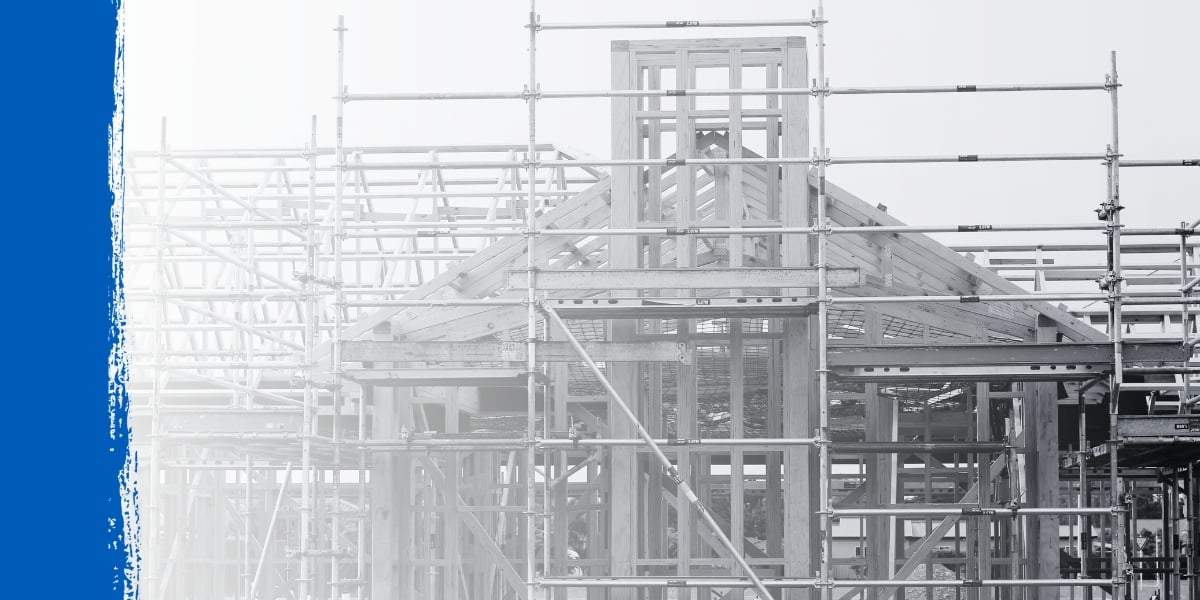Whether you are a professional builder or planning to build a new home for your family, it's important to understand the factors that influence construction costs. The building products market is constantly evolving. Staying informed about the latest trends can help you manage your construction budget, save money, and avoid unexpected expenses.
This guide provides a comprehensive overview of the elements affecting home building costs, including material prices, labor costs, and financial considerations.
What Does the Building Process Cost?
Before we discuss the trends influencing construction costs, let's look at the primary cost components you should account for when budgeting for a new house.
- Land cost, including land preparation: These encompass the purchase price of the land, as well as the costs for clearing, grading, and preparing the site for construction. Additionally, expenses for connecting utilities like water, sewer, electricity, and gas are included.
- Foundations: Costs in this category cover excavation, the materials required (such as concrete and rebar), and labor for pouring and constructing the foundation. The type of foundation (slab, crawl space, or basement) affects the material required per square foot and significantly impacts the cost.
- Framing: Framing costs include the lumber and other structural materials needed to build the house's skeleton and the labor to erect the frame. This stage also covers roof trusses and other structural components.
- Exterior and interior finishes: Exterior finishes involve the roofing, exterior siding, windows, and exterior doors. Interior finishes include insulation, drywall, painting, flooring, interior doors, trim, cabinetry, and countertops.
- Major systems installation: This category includes the installation of HVAC (heating, ventilation, and air conditioning), plumbing fixtures, and electrical systems.
- Building permits and fees: Obtaining the necessary building permits and paying associated fees is a mandatory part of the process, which also includes inspection fees and, in some cases, impact fees that contribute to local infrastructure.
- Professional services: Costs here cover the fees for architects or designers who create house plans and architectural drafts, engineers who ensure structural integrity, and project managers who oversee the construction process. These services ensure that the project meets all design and safety standards.
- Labor: Includes payments to general contractors, subcontractors, and tradespeople who work on different aspects of the project, from laying the foundation to installing major systems and finishing the interiors.
Understanding these cost centers helps home builders budget more effectively and prepare for the financial commitment required to build their dream home.
Construction Material Cost Trends
In the wake of the COVID-19 pandemic, the construction industry faced extreme price volatility, with unpredictable fluctuations in building material costs. Prices have settled in the last two years, so it's much easier to budget in 2024 than it was in 2022. However, global and domestic economic factors continue to influence prices.
Rising Prices
Many construction material prices have increased over the last year, although at a much slower rate than in previous years. Price increases are caused by global energy uncertainty, inflation, and labor shortages in the manufacturing industry.
- Asphalt felts and coatings: These materials, used for roofing, siding, and waterproofing applications, have seen price increases driven by rising crude oil prices and supply chain disruptions. Asphalt felts provide a base layer for shingles, while coatings extend the lifespan of roofs by providing a protective barrier against weather elements.
- Cement and concrete products: Concrete products used in foundations, structural elements, and paving are used in nearly all construction projects, so the high average price of cement is particularly impactful. Cement has experienced price hikes due to high energy costs and increased transportation expenses.
- Gypsum products: Gypsum, primarily used in drywall, has seen price increases in recent months after falling at the beginning of the year. Price changes are due to transportation costs and a rise in demand for new construction and renovations.
- Insulation materials: The price of insulation materials, such as fiberglass and foam boards, is rising due to increased raw material costs and a surge in demand for energy-efficient building solutions.
- Construction machinery and equipment: Prices for construction machinery and equipment, including excavators, cranes, and loaders, have increased due to supply chain disruptions, rising steel costs, and semiconductor shortages.
Falling Prices
While we've seen price rises for various products, others have consistently fallen from their high point as supply chains and market demand regain balance.
- Plastic construction products: Prices for plastic construction products like PVC pipes and vinyl siding have decreased as raw material availability improves and production ramps up.
- Lumber and plywood: Lumber and plywood prices have dropped significantly from the highs seen during the pandemic, mainly due to improved supply chain conditions and decreased speculative buying. Wood materials are a big part of the overall cost of building projects; wood is widely used in framing, sheathing, and various structural applications in residential and commercial construction.
- Steel mill products: The cost of steel mill products, including beams, rebar, and sheets, has decreased as global steel production stabilizes and demand softens. Steel is vital for structural frameworks, concrete reinforcement, and various other construction applications.
Construction Labor Costs
Labor costs are an ongoing challenge for the construction industry, which has experienced a labor shortage for several years. In 2023, 74% of builders reported labor shortages as a significant issue, and 75% expect it to remain a challenge in 2024.
A shortage of skilled workers is one of the primary drivers of increased costs. The construction industry has struggled to attract new talent, leading to higher wages as companies compete for a limited pool of qualified workers. The shortage is exacerbated by an aging workforce, with many experienced workers retiring without enough new entrants to replace them.
Financial Trends
Financial trends also influence the overall cost of building. Contractors and owner-builders must consider high interest rates, rising inflation, and buyer hesitancy.
High Interest Rates
High interest rates increase the cost of a home construction loan, making it more expensive to finance projects. In 2023, 90% of builders reported high interest rates as a significant issue, and 77% anticipate high rates will continue into 2024.
Rising Inflation
Rising inflation has been a widespread problem, with 83% of builders citing it as a significant issue in 2023. Although only 52% expect inflation to continue in 2024, it remains a concern. Inflation drives up the cost of materials, labor, and other expenses, making it more expensive to complete construction projects.
Buyer Hesitancy
Builders have also reported issues with customers who hesitate to build a house, often for the reasons we've just mentioned. They'd rather wait until the economic situation stabilizes, the cost to build declines, and they can reduce expenditure on the entire home-building process.
In 2023, 71% reported problems with buyers expecting prices or interest rates to decline if they wait. This hesitation is anticipated to persist in 2024, with 77% of builders expecting it to be an issue. Adverse media reports, cited by 56% of builders in 2023, contribute to buyers preferring to stay in their existing homes for the time being.
Increasing Market Demand
Rising prices and hesitant buyers are not encouraging for the construction industry, but the news isn't all bad. In spite of relatively expensive construction costs, demand for new homes is strong, driven by factors such as a housing shortage in many areas, remote work trends, and demographic shifts. Many people are now looking for homes that accommodate home offices and offer more living space.
Sustainability and Green Building
Homebuyers are also increasingly looking for properties that incorporate sustainable materials and energy-saving technologies. This demand for eco-friendly homes allows contractors who embrace green building to stand out from competitors, capturing a growing segment of environmentally conscious consumers.
Conclusion
The construction business and people looking to build their own house will face challenges in 2024, including rising material costs, labor shortages, and financial pressures. However, these issues are far less impactful than in previous years, and demand for builders, general contractors, and tradespeople is surging.
.png?width=98&height=67&name=Logo%20(13).png)
 Home Construction Costs in 2024: Current & Upcoming Trends" loading="lazy">
Home Construction Costs in 2024: Current & Upcoming Trends" loading="lazy">
.jpg)




